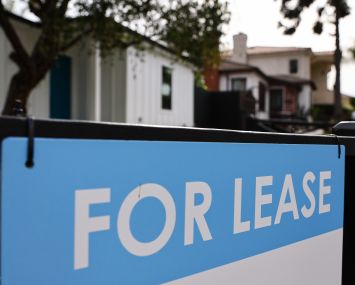Not Created Equal: Factors That Affect Retail Loan Performance
By Dylan Wall May 8, 2019 1:30 pm
reprints
The list of retailers that have declared major store closures, restructurings or defaults has grown in recent months. Still, it would be irresponsible for us to press the panic button and conclude that the U.S. retail market is failing. Retail continues to be a powerhouse sector of commercial real estate finance with retail loans currently making up 27 percent of all outstanding CMBS notes. Given that there are still strong performers in this sector, we analyzed our database to find which loans are outperforming and underperforming.
We measured loan performance using five metrics: occupancy rate at securitization; net operating income per rentable square foot (NOI PSF) at securitization; minimum occupancy during the loan’s life; minimum NOI PSF over the loan’s life; and the loan’s worst delinquency status. We also divided loan characteristics into property subtype, the year that the property was built or renovated, square-foot exposure to the largest tenant and geographic region. A total of 16,678 retail loans which were outstanding at some point within the past five years were observed in our study.
Property Subtype
Drugstore and urban and street retail properties were the strongest performing property subtypes. Drugstore notes performed well due to their collateral’s consistently high occupancy rates, high NOI PSF, and low delinquency rates. We found that community shopping centers, regional malls and neighborhood shopping centers skewed toward the lower end of our rankings. The three subtypes share a theme of mediocre occupancy rates and relatively low NOI PSF figures. On average, community shopping centers were the worst-performing properties in terms of both NOI PSF at securitization and the minimum NOI PSF throughout the loan’s life.
Year Built
The year built or year renovated for each property was broken down by decades between the 1940s and the 2010s.
We found that properties built before 1940, properties built in the 1940s and properties built after the 2000s performed the strongest. Properties in the 2010 vintages generally outperformed properties from the 2000 vintages.
Properties constructed before 1940 were the clear breakout stars in our retail ranking. Those properties outperformed the other decades due to their high NOI PSF at securitization and the average minimum value exhibited by the property. Properties constructed during the 1940s behaved similarly, with extremely high NOI PSF statistics paired with impressive occupancy rates. It is likely that many of these older properties are in densely populated, high performing geographies.
Any concern that older properties incur higher upkeep expenses was put to rest by the high average NOI exhibited. Additionally, it appears that newer properties haven’t failed to attract tenants: Properties built in the 2010s exhibited the highest occupancy rates of all the decades observed.
Top Tenant Exposure
Single-tenant properties were the standout category exhibiting the highest average NOI PSF, highest average occupancy rate and the lowest average delinquency rate. Nearly 50 percent of single-tenant loans were ranked in the top 20 percent of our retail CMBS ranking. Properties where the largest tenant occupies less than 35 percent of the space were the weakest performing, as they carried the lowest NOI PSF and the lowest minimum occupancy rates.
Region
The final descriptive categorization we used was the property’s corresponding U.S. Census region. Middle Atlantic properties were the clear standout performers in our regional classification. The strong performance of the region is helped along by the massive volume of retail CMBS outstanding in New York, which has a tendency to perform above average. Additionally, the region’s exemplary performance can be credited to the large number of single-tenant properties in large cities like New York and Philadelphia. The Pacific and New England regions were the next strongest areas.
Looking Ahead: Retail Performance in 2019 and Beyond
At this point, the future of the retail market remains unclear. While the demise of major retailers such as Sears, Toys “R” Us, National Stores, and Mattress Firm sparked some panic in the industry, many critics contend that the retail apocalypse has been vastly overstated. Some have argued that the fall of major retail giants was inevitable: a sign of a growing technological world weeding out players slow to adapt to the online marketplace. It is too soon to make any definitive predictions, but there is enough data to analyze property performance and determine which kind of properties may do well in this rapidly evolving market.


